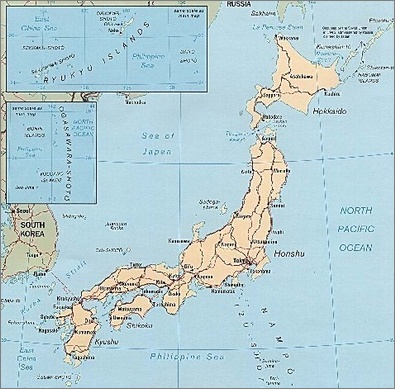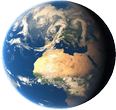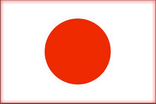





© Bart Everts

 |
 |
 |
 |
 |


| Kobe is the city where the conference meeting was held, which I attended. Kobe will probably not make it to the top 10 of places to visit in Japan. It is a city without any particular highlights and is mainly known from the 1995 earthquake that destroyed the city. There's little that reminds you from that event, except for a special memorial near the harbour. Some neighbourhouds like Kitano with old European houses and Chinatown are nice to stroll through. The ropeway up the mountains behind Kobe give a wonderful view of Kobe and its harbour and allows you to escape from the urban jungle. I stayed in an appartment together with two freinds for week during and after the conference meeting. |
 |
 |
| Physical activities: eg Walking / Rafting / swimming Nature: eg National Park / Reserve City / Cultural site |
 |
 |
 |

| Although Nikko is only 2 hours away from downtown Tokyo, it is a totally different world. It's a little town where not much happens and is located at the base of the mountain ranges that encompasses Nikko National Park. Nikko itself is particularly famous for its shrines that are listed as world heritage. The Toshogu shrine should not be missed. The compex of temples with all their colorful decorations is somewhat overwhelming. Most famous is the woodcarving of 3 monkeys on one of the temples that represent 'see, hear and speak no evil'-principle of buddism. The other temples in the complex are less crowded with schoolkids and are also very beautiful. Nikko is also the gateway for visiting Nikko National Park. I was lucky enough to visit this park exactly when the autumn colors were at their best. Espcially during that time of year it's very very crowded in the park. Nonetheless, it was definatley worth it: the array of colors, combined with beautiful waterfalls and tranquil rivers and lakes was a treat for the eye. The Kegon falls, which drop 100m down a cliff, are also very nice. |

| Tokyo is a truly fascinating metropolis. Many lively neighbourhoods and intersting sights to visit, highly efficient public transport, great city parks and very safe to wander around. The yamamote railway line makes a circular loop that links the main neighbourhoods of interest, and is therefore very useful for sigthseeing. Tokyo is such an enormous city that I only focussed on the east side of the city center to get a first impression of what this city is like. I visited Asakusa, a part of the city where the Senso-ji shrine in located. South of this temple there are a couple of streets that are lined with craftshops and curiosa selling shops. A perfect place to pick up some nice souvenirs. Ueno, harbours the Ueno park and the city Zoo. Both are well worth a visit if you want to escape the concrete. The market under the railway tracks south of Ueno station is a perfect place for finding a good bargain. Further south you will find 'electric city' close to the Akihabara station. Even if you're not intersted in electronics it's a place you should visit. Dozens of shops selling basically everything that needs electricity for it to function. A perfect place to shop aound for camera equipment. Furthermore, I visited Tsukiji fish market in the early morning. This biggest fish market of Japan, is a test for all your senses. Fresh loads of fish and basically every other creature from the sea is sold here. You can't get your sashimi any fresher than this! And lastly, I visited the Tokyo sea life park and adjacent bird sanctuary. The sea park is particularly well known for its school of tuna fish. They also have lots of tropical fish in their aquaria. If you're interested in birding the best place in the vicinity of Tokyo is te well designed bird sanctuary next to the sea life park that atttracts migrating waders and waterbirds. Unfortunately, I didn't have enough time to visit Shibuya, which I understood is thé place you should go to for an entertaining night. Perhaps next time... |

| Kyoto is known as the cultural and historical capital of Japan. It is particularly famous for its numerous temples and gardens and traditional arts and festivals. I visited Tokyo for just one day which is way too short to fully appreciate Kyoto. I focussed only on the temples on the eastern and northern side of town, which was already more than enough. Thew following temples are definately worth a visit:The fushimi-inari temple is very nice because of the hundreds of orange Torii that mark your way trhough the forsted hills. The kiyomizu dera temple, situtaed on a hill has some excellent views over Kyoto. In eastern Kyoto probably the most famous is the Ginkaku-Ji, or temple of the silver pavilion. Especially the wonderfully designed garden, with socalled Seas of silver sands or 'dry garden', is lovely. Unfortunately the pavilion itself was being renovated. On the northern hills there are two other major draws: the Kinkaku-ji, or Golden pavilion,a nd the gardens of Ruoan-ji. The Golden Pavilion is an magnificant sight, and is indeed covered in gold. The most famous garden of Japan is the one of Ryoan-ji. It's the most abstract of all Zen gardens with some rocks in a sea of white sand. |
 |


| The most beautiful castle of Japan is located in Himeji and is designated as a world heritage site. It is situated on a hill overseeing the rest of the town and dates back from the 17th century. It is an impressive five story building which can be reached by passing moats, thick defensive walls and corridors. Nextdoor is a beautiful edo-era style garden that should not be missed, while you're there. |




